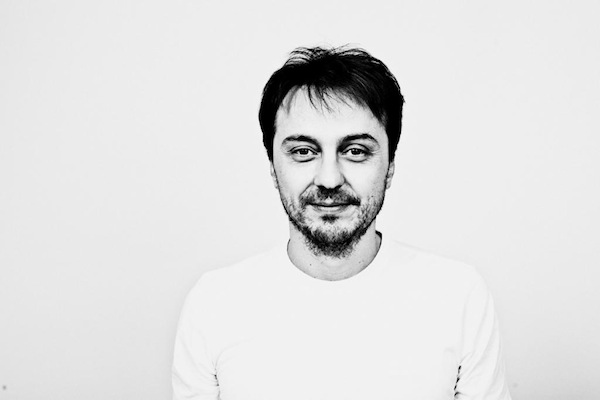You have no items in your cart. Want to get some nice things?
Go shoppingCalin Peter Netzer talks about his award-winning drama, Child’s Pose, which arrives in cinemas November 1
Litro: Can you give a quick description of Child’s Pose in your own words?
Calin: Certainly; it’s a psychological drama about a domineering mother and her adult son and the main drive of the film, for me, is the Oedipus complex. It’s about a dysfunctional family, and specifically the dysfunctional relationship between a mother and son.
Litro: Where did you, and screenwriter Razvan Radulescu first come up with the idea for the film?
Calin: It was a long story – initially we had a completely different project in mind. We wanted to make a film in Spain, set in the Costa Del Sol, about English retirees. It was kind of like the film by [Michael] Haneke, Amour. We tried to interview people and meet with them, but we found that we didn’t understand the mentality of these people. Then we started to go back and talk about our own families and relationships, which is when we found that we both had really difficult relationships with our mothers. We decided it was better to make a film about this; about what we know.
Litro: The setting for the piece is the Romanian upper middle class. Was this also just ‘what you knew’ or were there specific reasons for placing the action within this social strata?
Calin: First of all, it was important for us to bring another class – another feel, something new – to Romanian cinema, because everything recently has concentrated on the middle class or lower. Secondly, the subject was very good for this, because of our central family; these dysfunctional relationships seem to happen mostly in the upper middle classes. I don’t say that they don’t happen in the other ones but… Anyway, it was a chance to change it up a little bit from what a lot of Romanian cinema has been doing.
Litro: It’s certainly something different; the central character is someone who you don’t expect to see front-and-centre in modern Romanian cinema.
Calin: That was a problem, actually, in working with Luminita [Gheorghiu] – the main actress – on this because she was a little bit scared to play this person that she was so unused to.
Litro: That’s fascinating, as she’s sensational. What did you do to win her over? How did you both prepare for it?
Calin: I tried to go out with her, to meet people like the character, but she didn’t want to. She was anxious about it and tried a few times to leave the film, to run away from this character, and I brought her back. She was worried as she’d never done such a character before, as you’ll know from other recent Romanian films (4 Months, 3 Weeks and 2 Days; Beyond the Hills). I even wanted her to look different from those films – physically, I mean. We made some changes, put some Botox in her lips, and she got scared again: “why do you want to change me?” *Laughs*
Litro: It’s interesting that she is your focus. The obvious route with this plotline, would for many films, be to lead with a male protagonist and centre on the son. When did you decide to focus on the mother’s story?
Calin: I discussed this with Razvan; right from the very beginning we thought we needed to tell this film from her point of view. It was clear that this was her story, as she was more of an assertive character than [the son]. After the accident there would not have been much to see had we told the story through his eyes. The plot and characters kind of happened together, but I guess first of all it was this character; this woman.
Litro: There are a couple of subtle characteristics of the son, such as his germophobia. Was this just an effort to add more detail to him, or were there particular reasons for their inclusion?
Calin: It’s about an Oedipus complex. He’s a neurotic and these are the symptoms that we chose to concentrate on; fear of germs and diseases. Something tiny, but very dangerous, that can take him to his death. It’s like a subconscious punishment for him, for the emotional attraction that he feels towards his mother.
Litro: The film presents some intriguing social commentary. Were these aspects that you wanted to emphasise or did they just come from providing a background to the story?
Calin: They just come from the story and the world we live in. There is nothing particularly special about it from mine or Razvan’s perspective, it was really just for dramatic effect. The film has two levels; some people see the main story as the relationship between mother and son. Others – for example, critics [at the Berlin Film Festival] – see the social side of Romania, and so on. This is something that is usual, nothing out of the ordinary, and the story was just placed in this context. Many people concentrate on the idea that the rich family can buy out the poor family, but that’s not really the case. In the final scene there is a human discussion from mother to mother, both of them having lost a child in some way. There are things that can’t be resolved by money or power.
Litro: Speaking of that final scene, the lower class family are presented as much more emotionally authentic, and the upper-class characters colder. Was that an attempt to reflect on Romanian society, or more of a useful narrative device to give the mother an emotional confrontation?
Calin: *Rubs chin* That’s an interesting question – I think, yes, it’s a bit of both. The upper-classes are colder and hypocritical and the lower classes warmer, possibly. I think, though, that the final scene and the lessons that Cornelia gets are a big hit for her – the acceptance from these other people.
Litro: Finally, why Child’s Pose?
Calin: Why Child’s Pose? It’s a foetal yoga position. There was a scene in the script – though we didn’t shoot it – in which Cornelia does yoga before the final meeting with the other parents. We dropped the scene from the film as it didn’t make a lot of sense but the title has a lot of different meanings, and to be honest, we didn’t have a better one. Luckily, it works really well for us in English!
Child’s Pose is in cinemas from November 1. See the full review, also by Ben Nicholson here
About Ben Nicholson
A compulsive cinephile, Ben fell in love with film through repeated viewings of Michael Jackson being transformed into a werewolf behind the scenes of John Landis' seminal video for Thriller. This passion has manifested itself in his consumption of movies and the enjoyment derived from reading, discussion and writing about cinema which can all be found on New Urbanite. His favourite films include The Third Man, In The Mood For Love, Badlands, 3 Iron, Casablanca, Ran, and Last Year in Marienbad - to name but a few.





